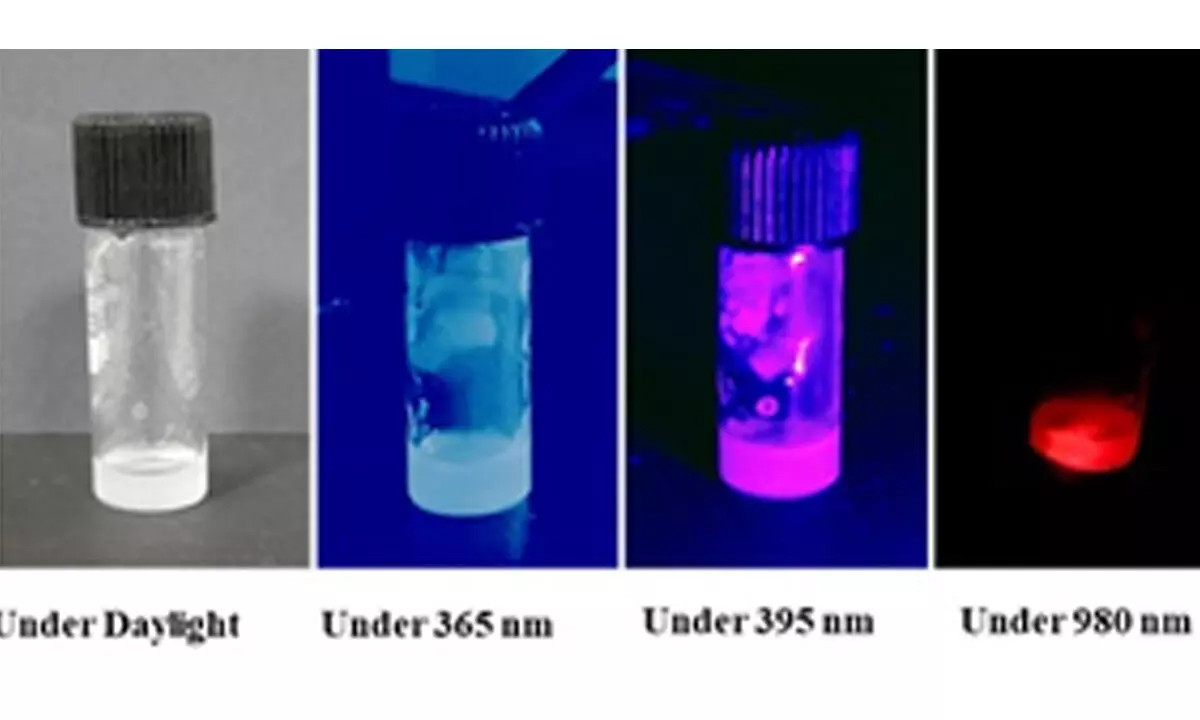INST scientists develop anti-counterfeiting ink to curb document duplication
Share :

A team of scientists at the Institute of Nano Science and Technology (INST), an autonomous institute of the Department of Science and Technology, has developed a novel ink with enhanced security features to stop counterfeiting in currency, certificates, branded goods and medicines, the Ministry of Science & Technology said on Wednesday.
New Delhi: A team of scientists at the Institute of Nano Science and Technology (INST), an autonomous institute of the Department of Science and Technology, has developed a novel ink with enhanced security features to stop counterfeiting in currency, certificates, branded goods and medicines, the Ministry of Science & Technology said on Wednesday.
Even as counterfeiting has been growing around the world, researchers are trying to find unique ways to prevent it. They focussed on rare earth ions with luminescent properties and were long known to possess the characteristic emissions of bismuth (a chemical element).
Using the property of rare earth materials, the team synthesised a first-of-its-kind security ink based on luminescent nanomaterials with rare earth doping. This enables excitation-dependent luminescence (under both ultraviolet and near-infrared light it gives visible emission).
The ink can overcome the limitations of current covert tags, which are security features usually visible only under UV light and can be easily duplicated.
“The new ink offers enhanced security features through its ability to display different colours under various light wavelengths. Specifically, the ink appears vibrant blue under 365 nm light, pink under 395 nm light, and orange-red under 980 nm near-infrared (NIR) light and remains effective under a range of light, temperature, and humidity conditions,” the ministry said.
Using a simple co-precipitation method, the scientists synthesised the luminescent nanomaterial at 120 degrees Celsius, after which the nanomaterials were dispersed into commercially available PVC ink.
The mixture was then used to create patterns and letters through a screen-printing technique. When the printed patterns are exposed to different wavelengths of light, it shows the desired colour changes, proving the effectiveness of the ink.
Further, the team also was able to enhance the encryption and decryption capabilities of the ink, by combining rare earth ions with well-known luminescent properties and bismuth with characteristic emissions. This improved its security potential.
Besides helping combat counterfeiting, the luminescent ink made from these nanomaterials can also be applied to fake-proof various items, including currency, certificates, medicines, and branded products.
This allows both consumers and manufacturers to easily verify the authenticity of their items, providing a simple yet powerful tool to detect counterfeits, the scientists said.

















